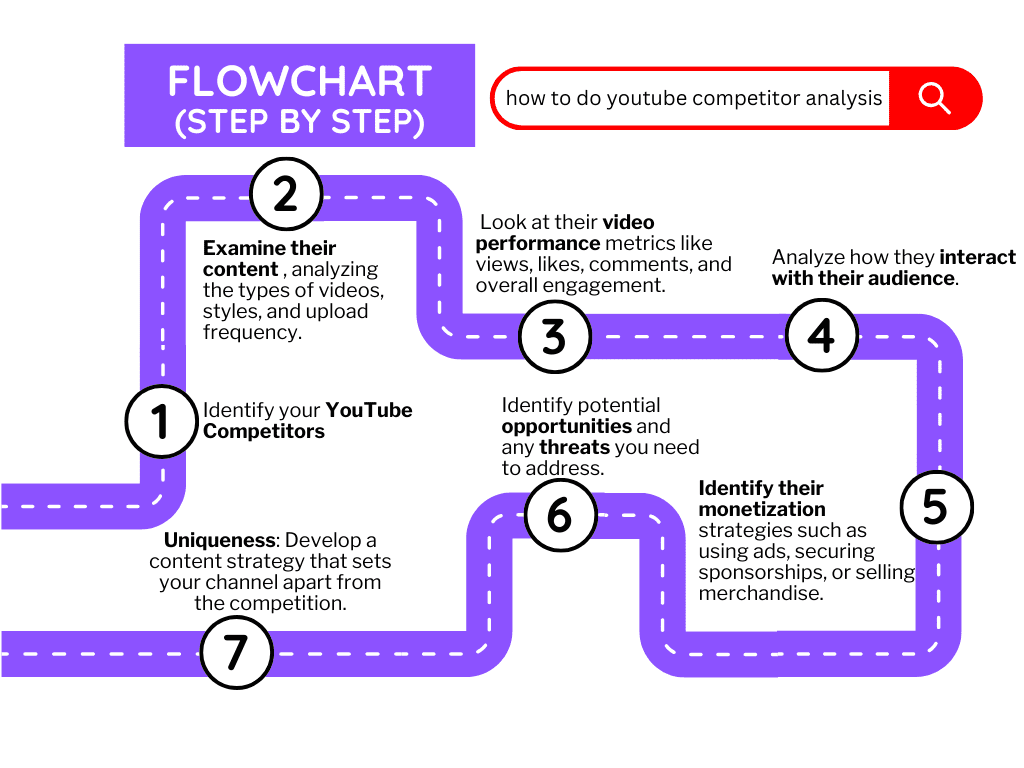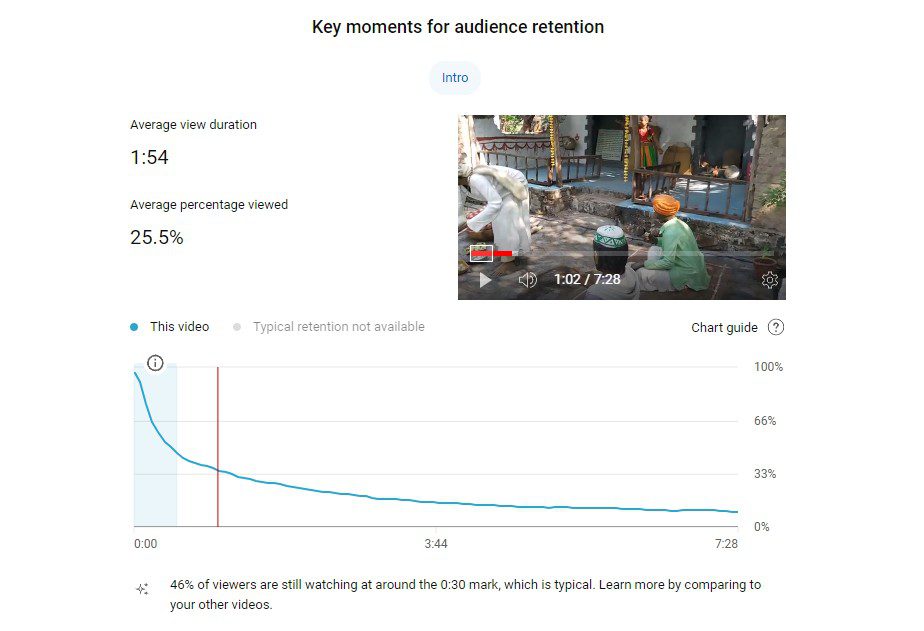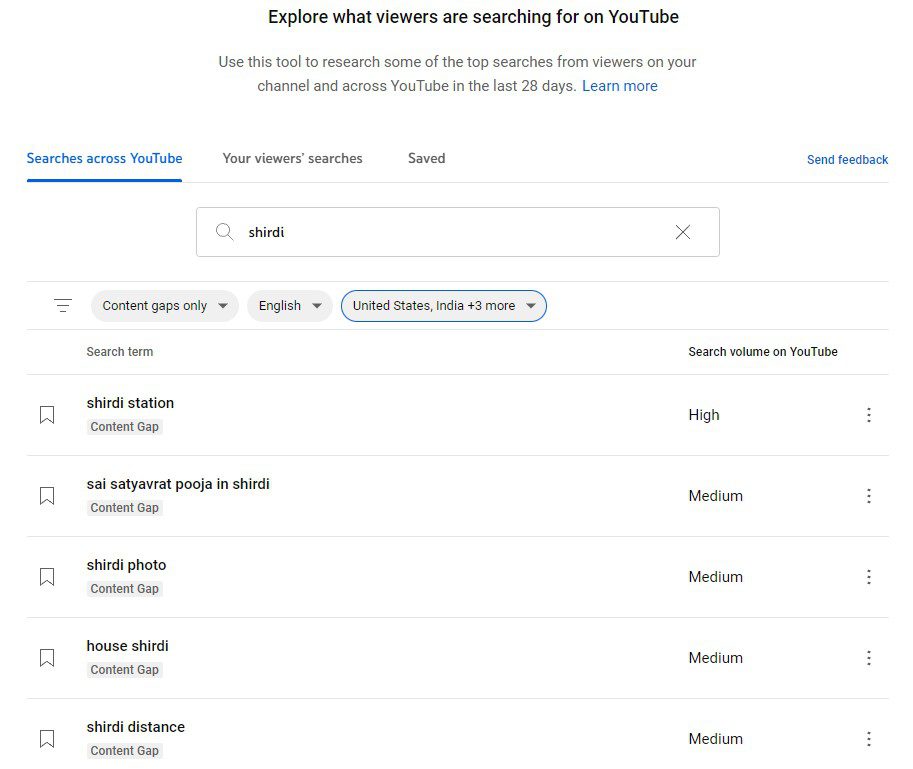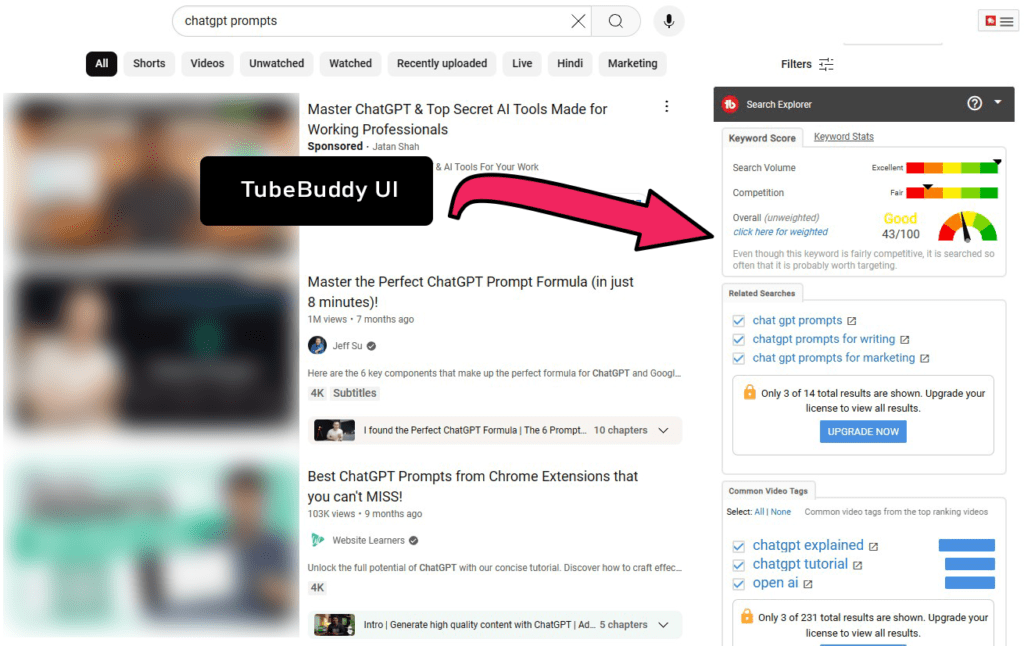YouTube has over 2 billion monthly users now in 2024. With such a vast audience, it’s no wonder that businesses and content creators crave for visibility on this platform. However, given the immense competition, standing out on YouTube has become more difficult than ever.
If you depend on YouTube’s algorithm to give you the occasional exposure, then you are unlikely to achieve long-term success, because YouTube is not just a platform to share your videos, it has become a livelihood for millions of users.
If you’re struggling to captivate your audience and brainstorm video ideas then this is where YouTube competitor analysis comes into play.
Did you know that only a tiny fraction of YouTube channels achieve sustainable growth? Learn how to overcome the competition with a powerful tool: competitor analysis!
Table of Contents
What is YouTube Competitor Analysis
Competitor analysis on YouTube means figuring out who your competition is and looking closely at what they’re doing to see what works well and what doesn’t. This includes checking out their videos, how much their audience interacts with them, how well their videos perform in terms of performance metrics such as number of views, likes, subscribers and how healthy their channel is overall.
By understanding all this, you can learn valuable things that will help you decide what kind of videos to make and how to improve your channel to get more views and subscribers.
Here is an infrographic to show the different types of video content on YouTube.

Why It’s Important
Understanding your competitors allows you to make informed decisions and leverage their successes. Remember, as Robert Weiss said, “Business decision makers LOVE online video because it gives them the most amount of information in the shortest amount of time.” Invest in competitor analysis to gain that edge on YouTube.
Ready to get started with competitor analysis? Let’s dive into the benefits!
Benefits of Competitor Analysis
Conducting a thorough competitor analysis on YouTube can yield numerous benefits, allowing you to:
- Evaluate Your Video Performance: Comparing your video metrics to competitors helps you see how engaging, far-reaching, and high-quality your content is. Analyze competitor videos with high views to find out what elements (title, thumbnail) make them successful and adapt your approach.
Furthermore, competitor analysis allows you to:
- Collect Ideas and Inspiration: See what competitor videos are popular (tutorials for example). Use this to inspire your own unique video ideas. This variety will keep the viewers engaged.
- Learn from Your Competitors’ Most Successful Tactics: Look for tactics like storytelling or influencer collabs. Adapt these successful strategies to improve your own videos. By adopting what works for them, you can potentially improve the quality of your videos.
- Spot Gaps and Find Opportunities That Your Competitors Have Missed: Analyze competitor content to find what’s missing (untouched topics, unanswered comments). Fill these gaps with informative videos to provide unique value and attract viewers.
- Monitor Trends: Watch trending content (formats, topics). Adapt these trends (how-to guides, vlogs) to keep your videos relevant and attract viewers.
- Let Your Unique Value Shine: Use competitor analysis to highlight what makes your channel different. If your competitors focus on product reviews, you might emphasize in-depth tutorials or behind-the-scenes content to differentiate your channel.
- Benchmark Your Brand Goals: Set performance benchmarks based on your competitors’ achievements. If a competitor reaches 10,000 views within the first week with a product review, aim to achieve the same or a higher number with your unique in-depth tutorial approach. By setting realistic yet challenging goals based on competitor analysis, you can track your progress and measure your channel’s growth.
Step-by-Step Guide to YouTube Competitor Analysis
A comprehensive YouTube competitor analysis involves a series of detailed steps. Here’s an improved guide to help you navigate this process, but before that check out the Flowchart below depicting different stages of YouTube competitor analysis.

1. Identifying Your Competitors
- List Potential Competitors: Begin by listing channels that produce content similar to yours or target a similar audience.
- Use Advanced Search Techniques: Utilize YouTube’s search filters to find channels that rank well for your niche keywords.
- Leverage Analytics Tools: Tools like vidIQ, Social Blade or Tube Buddy can help identify channels with significant audience overlap.
2. Analyzing Competitor Content
- Evaluate Content Quality: Assess the production quality, editing style, and content diversity.
- Content Calendar Analysis: Study their posting frequency and identify any patterns in their content schedule.
- SEO Strategies: Examine their use of titles, descriptions, tags, and video transcripts for SEO insights.
3. Understanding Audience Engagement
- Audience Demographics: Use YouTube Analytics to gather data on age, gender, location, and interests.
- Viewer Behavior Patterns: Analyze watch time, retention rates, and common drop-off points in their videos.
- Analyze Competitor Comments: Review comments on your competitors’ videos to identify viewer pain points, content requests, and areas for improvement. This can provide valuable insights for your own content strategy. Remember, another person’s loss can become your profit.
4. Benchmarking Performance
- Subscribers and Growth Trends: Monitor subscriber counts and growth trends to gauge channel momentum.
- Video Performance Metrics: Compare views, likes, comments, and shares per video to benchmark against your content.
While benchmarks may vary, according to a statistical report a good average duration for a video which is short, for example, less than 5 minutes, should be more than 50-70%.
Average duration of a 7 minutes 28 second video long video under touring to a religious spot niche is 1 minute 54 seconds (screenshot below).

5. Identifying Content Gaps
- Unique Value Proposition: Identify what unique content or perspectives you can offer that your competitors don’t.
- Innovate Content Ideas: Based on your findings, brainstorm content ideas that fill these gaps and align with your brand.
6. Refining Your Strategy
- Optimize Your Content: Apply the insights gained to improve your video quality, SEO, and engagement strategies.
- Set Measurable Goals: Establish clear, quantifiable targets for your channel based on your competitor analysis.
7. Monitoring Trends and Adjusting Tactics
- Stay Updated on Trends: Keep an eye on emerging trends within your niche and adjust your content gameplan accordingly.
- Regular Review Cycles: Set up a schedule for regular competitor analysis to maintain a competitive edge.
Also read: Learn how you can check if your channel is monetized or not
Utilizing Content Gaps Tools on YouTube
With the data gathered from your competitor analysis, you can start building a more informed YouTube strategy.
Here is how you can access Content Gaps feature on YouTube:
Go to ‘YouTube Studio’
Click on ‘Analytics’
Click on ‘Research’ (Switch to older version for a better view)
Type in keywords (Try with keywords from title of the videos you have created or want to create in future)
From the ‘All Searches’ drop down, select ‘Content Gaps Only’, hit “Apply”

I have one video of “Shirdi Village Tour” on YouTube. Here on Content Gaps feature, I typed “shirdi” and got 5 potential keywords or video opportunities with High to Medium search volume.
In the same way, you can try out different keywords and get priceless data from YouTube for absolutely free.
Why create videos that nobody is searching for? Use your time and effort wisely when you have access to a content gaps tool.
Tools and Resources for YouTube Competitor Analysis
To conduct an effective YouTube competitor analysis, having the right set of tools can save you time and provide deeper insights. Here are some recommended tools and resources:
- Social Blade: Offers comprehensive channel statistics, growth projections, and rankings to help you understand your competitors’ trajectory and performance.
- TubeBuddy: This browser extension provides video optimization, analytics features, and keyword research tools to fine-tune your content and SEO strategies.

- vidIQ: Known for its video analytics, keyword research, and channel audit capabilities, vidIQ helps you uncover what keywords your competitors are targeting and their overall channel health. As you can see in the below, I have shared 3 screenshots from vidiQ, where you can use this tool for generating YouTube video’s Title, Description, Keywords and most importantly Video script.



- Similarweb: With Similarweb, you can reveal your competitors’ audience demographics, analyze their overall performance, and use keyword analysis to identify content gaps.
- A Good Creator (formely known as Vidooly): This tool is different from other tools because it enables you to compare your video ad performance against your competitors. You can see how your ad clicks, view-through rates, and overall engagement metrics stack up.
Each of these tools offers unique features, free and paid both, that can assist you in different aspects of competitor analysis. Whether it’s tracking posting frequency, video type and quality, audience engagement rate, or marketing and advertising strategies, these tools provide valuable data that can inform your YouTube strategy and help you outperform your competitors.
Case Studies or Examples of YouTube Competitor Analysis
To illustrate the impact of a well-executed YouTube competitor analysis, let’s explore some case studies:
Most common hurdles experienced by many YouTubers, such as:
- Difficulty standing out in a crowded niche.
- Struggling to gain traction and grow their audience.
- Difficulty keeping viewers engaged throughout their videos.
Case Study 1: Small Tech Review Channel Outperforms Larger Competitors
A small tech review channel used competitor analysis to identify a gap in comprehensive comparison videos between popular gadgets. By focusing on this niche, they produced in-depth comparison content that their competitors were overlooking. As a result, they saw a 200% increase in subscriber growth over six months and a significant boost in viewer engagement.
Case Study 2: A lifestyle vlogger primarily created content based on their personal interests
A lifestyle vlogger noticed that competitors with higher engagement often collaborated with other creators and featured trending challenges. After incorporating these elements into their strategy, the vlogger rebranded their channel, leading to a 50% increase in viewership and a more dedicated subscriber base.
Case Study 3: An educational channel used basic descriptions without much keyword optimization
An educational channel conducted a competitor analysis and discovered that their competitors were not fully optimizing their video descriptions for search. By enhancing their own SEO tactics and using targeted keywords, they achieved a top-three ranking for their main topics, resulting in a 30% increase in organic traffic.
These case studies demonstrate how different channels can use competitor analysis to refine their strategies, fill content gaps, and ultimately achieve greater success on YouTube.
Note: The case study data was taken from Medium.
Conclusion
YouTube competitor analysis is an approach for any content creator or marketer looking to succeed on the platform. By understanding your competitors, you can craft a content strategy that stands out, engages your audience, and drives channel growth. Remember, the key to success on YouTube is not just to emulate what others are doing but to learn from them and carve out your own unique space in the YouTube ecosystem.




